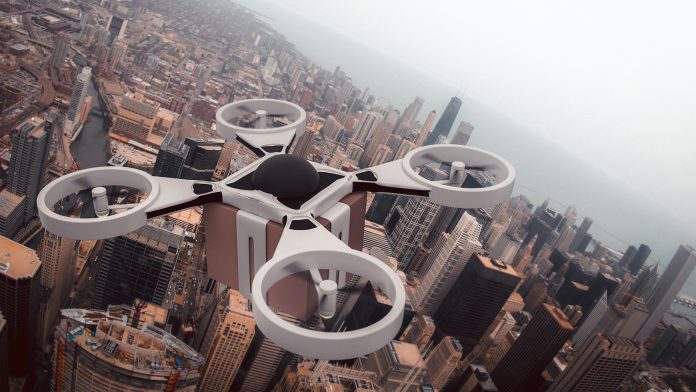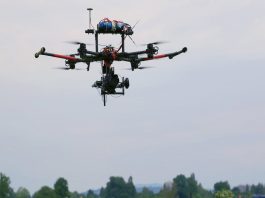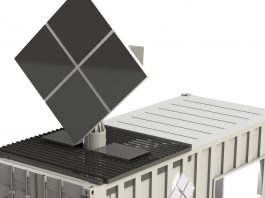The European Union Aviation Safety Agency (EASA) tells The Innovation Platform about how the challenges posed by drones are being addressed.
The challenges facing aviation are numerous and diverse – from those concerning air traffic management to those concerning cybersecurity, safety, the environment, and many others. The increasing use of drones is also posing a different set of challenges to the sector, meaning that new approaches – as well as rules and regulations – need to be developed and implemented.
The Innovation Platform spoke to the European Union Aviation Safety Agency (EASA) about the role it plays in ensuring safety across the board, as well as how drones are being addressed moving forwards.
What role does EASA play?
EASA is the centre-piece of the European Union’s strategy for aviation safety. Its objectives are:
- To promote and achieve the highest common standards of safety and environmental protection in civil aviation; and
- To ensure you have the safest possible flight.
EASA is responsible for setting the rules, guidelines, and standards for all safety and environmental aspects of civil aviation:
- We regularly revise the risks and improve the common regulations applied among EU countries and airlines so they are always of the highest standard. We work hand-in-hand with national authorities and aviation stakeholders across Europe to achieve these goals;
- In addition, the Agency’s experts apply strict certification and inspection standards to provide European citizens with the safest and most environmentally friendly aviation system in the world; and
- We also join forces with other international organisations to make the experience of flying safer in all parts of the world.
The Agency was founded in 2002 and was initially known as the European Aviation Safety Agency. The name was changed to European Union Aviation Safety Agency in 2018, when its responsibilities were also widened. It has its headquarters in Cologne, Germany, a Branch office in Brussels, and representation offices in Beijing, China; Montreal, Canada; Singapore; and Washington D.C. in the United States.
Our staff comprises more than 800 aviation experts and administrative staff from all over Europe.
What are the main risks associated with drones? What are the challenges that occur in association with their integration into urban environments?
The main risks associated to drones are safety, security, and societal acceptance:
- There is a need to ensure safe ‘unmanned aircraft systems’ (UAS) operations in urban environment are safe, secure, and environmentally friendly, and that they also respect the privacy of the citizen;
- As UAS operations in urban environments will be closer to people and properties, there is a need to ensure the societal acceptance of these operations;
- Operations in urban environments will also require the involvement of authorities such as law enforcement and other actors that have not been involved so far in aviation. There is thus a need to ensure common understanding and proper co-ordination between all the involved actors;
- One of the main challenges is to ensure secure operations and prevent non-authorised UAS operations and even criminal actions using UAS operations. This is one of the major concerns in allowing urban air mobility (UAM) operations, and even though this is outside of EASA’s scope, there are aspects of the European regulations on drones and also in the proposals made by EASA that can support the law enforcement authorities, as the case of electronic identification requirement for each UAS; and
- Another challenge is also to be able to manage more complex operations such as beyond visual line of sight (BVLOS) operations and operations of UAS carrying passengers in an urban environment. These operations require a higher level of aircraft safety as well as being supported by services to enable their safe operations. Some of these services, named ‘U-space services’, are included in EASA’s Opinion: ‘High-level regulatory framework for the U-space’.
What is the Opinion’s goal, and what rules have you have suggested be put into place in order to support it?
The objective of the Opinion is to create:
- The conditions for manned and unmanned aircraft to operate safely in the airspace (controlled and uncontrolled airspace) where U-space services are provided and ultimately to prevent collisions between manned and unmanned aircraft and between unmanned aircraft themselves; and
- A competitive U-space services market that can lead to safe and sustainable operations in the U-space airspace and support operational, technical, and business developments.
To achieve this, the Opinion establishes a common information service (CIS) that will enable the exchange of essential information between the U-space service providers (USSPs), the UAS operators, the air navigation service providers (ANSPs) and all other participants in the U-space airspace.
The draft regulation proposed with the Opinion intends to contribute to those objectives in proposing the necessary building blocks and mitigation layers to safely manage the forecasted UAS operations in the upcoming years.
How can this Opinion help the unmanned aircraft systems and U-space technologies evolve?
The Opinion contains a first set of rules for the U-space to kick-off. The development of the U-space concept is still on-going and validations of all originally defined U-space services, rules, and procedures have not yet been completed. There are still on-going validation activities within SESAR and national research and demonstration projects – for instance, due to the lack of experience with tactical de-confliction techniques for drones, the way to manage UAS traffic within the U-space airspace today can only be based on strategic and pre-tactical de-confliction techniques.
New concepts such as separation minima between UAS in urban airspace and respective rules and procedures, and detect and avoid systems, capabilities, and technologies are not considered to be mature enough at this stage to be included or considered in a first-phase regulation on U-space.
Similarly, promising developments in other areas, such as information and communications technology (ICT) and mobile telecommunications, which may become the foundation for connectivity between UAS operators and the U-space service providers’ systems used to provide services within the U-space airspace, are currently being validated for use in a U-space environment.
Therefore, the implementation of this first-phase regulation will cater for the expected UAS traffic and complexity of the near future. Nevertheless, amendments will be required as soon as more advanced U-space services mature to allow for full deployment of the U-space.
This Opinion should be considered the first step towards the U-space implementation. It is likely that the fast, on-going technological developments and the expected evolution of the operational concepts and needs will require additional regulatory actions in the short term in order to ensure continuous harmonised development of the U-space implementation.
Are there technologies and/or regulations already in place in terms of drone and bird-aircraft strike avoidance?
There are already certification specifications for aircraft against bird strike and rules and procedures in place to prevent and mitigate their impact. EASA’s intention is to develop the same for small drones-aircraft collision. The Agency is presently conducting research in this domain and has undertaken several tasks and initiatives to come up with suitable specifications and guidance in the near future. U-space services and the establishment of geographical zones by Member States mainly around airports should also support in this regard.
EASA is presently undertaking further regulatory and implementation actions to support the adoption of the first step U-space regulation and the further development of U-space services, rules and procedures. In addition, the Agency will initiate its work on the development of acceptable means of compliance and guidance that will support the implementation of the U-space regulation once it has been adopted.
Maria Algar Ruiz
Drones Programme Manager
European Union Aviation Safety Agency (EASA)
+49 221 8999 000
communications@easa.europa.eu
Tweet @EASA
www.easa.europa.eu
Please note, this article will also appear in the second edition of our new quarterly publication.









